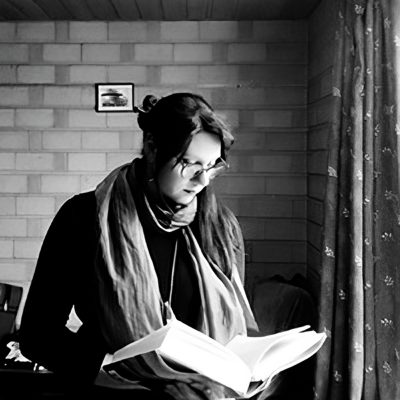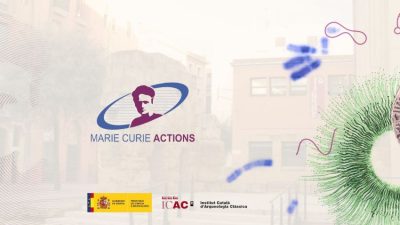
The European Commission has published the results of the Marie Sklodowska Curie Postdoctoral Fellowships (MSCA) 2023 call, which rank Spain, for the fifth consecutive year, as the top country in the European Union in attracting talent.
In total, 175 selected postdoctoral researchers will join Spanish universities and research centers, among which the ICAC-CERCA stands out, ranking eleventh on the list of beneficiary institutions and hosting 4 researchers in the GIAP research group.
As reported in a press release by the Ministry of Science, Innovation, and Universities, the 2023 call, which has now been resolved, had a total budget of 258 million euros, of which Spain obtained 32.4 million, representing a return rate of 19.3 % of the European Union (EU27) countries.
The 175 research projects to be developed in the national territory have been funded among 1,025 projects submitted by Spanish institutions, resulting in a success rate of 17.07 %, slightly higher than the European average of 15.77 %. Globally, 7,918 proposals from the call were analyzed, with 1,249 ultimately funded to be managed by the Research Executive Agency (REA).
The main Spanish institution in terms of the number of projects and potential talent attraction globally in the MSCA PF 2023 call is the Spanish National Research Council (CSIC), with 27 projects. With this result, it becomes the fourth European institution with the highest number of projects, surpassed only by the Centre National de la Recherche Scientifique (CNRS) (34), the University of Copenhagen (28), and the University of Cambridge (28).
Among the top 15 Spanish institutions, we find five CERCA centers. Two of them are among the top five: ICFO and ICIQ, with 8 and 7 projects respectively. ICAC, with 4 projects, holds the eleventh position. The fifth CERCA center, ICN2, is in the 14th position (with 3 grants awarded). Thus, two of the five highlighted CERCA centers in this call (ICIQ and ICAC) are from Southern Catalonia.
The 15 Spanish institutions that will host the most research projects from this call account for 112 out of the 175 grants awarded (64 %). The list of institutions, by number of projects, is as follows:
-
- CSIC, Consejo Superior de Investigaciones Científicas – Agencia Estatal: 27
- Univ. de Granada: 9
- Univ. de Santiago de Compostela: 9
- ICFO, Institut de Ciències Fotòniques: 8
- ICIQ, Institut Català d’Investigació Química: 7
- IMDEA Materiales: 7
- Univ. de Barcelona: 7
- Univ. de Sevilla: 6
- Univ. Pompeu Fabra: 6
- Univ. Complutense de Madrid: 5
- ICAC, Institut Català d’Arqueologia Clàssica: 4
- Univ. de Zaragoza: 4
- CIC nanoGUNE, Centre de Investigación Cooperativa en Nanociencias: 3
- ICN2, Institut Català de Nanociència i Nanotecnologia: 3
- Univ. de Salamanca: 3
Success of ICAC-CERCA in the results of the Marie Sklodowska Curie Postdoctoral Fellowships 2023 call
The European Union has awarded four postdoctoral grants to ICAC-CERCA, which means that the GIAP research group will host four fellows. One of them is Faidon Moudopoulos, whose extended stay with us for two years we celebrate, after having enjoyed a Juan de la Cierva grant from the State Research Agency (Ministry of Science, Innovation and Universities).
Within the GIAP research group, three researchers will join the Computational Archaeology team under the supervision of Hèctor A. Orengo (ICREA-ICAC), and the fourth will join the Archaeobotany team under the supervision of Alexandra Livarda.
Here is a brief introduction to each of them:
Project E-TransAp:Early Intensive Pastoralism and Transhumance in the Apennines (HORIZON-MSCA-2023-PF-01-01-101151285)
Researcher: Elena Scarsella
Supervisor: Hèctor A. Orengo (ICREA-ICAC)
«Classical sources and archaeological data coincide in identifying the existence of transhumant movements in the Apennines during the Roman period. However, there is little evidence on how and when it started, what was its socioeconomic context and environmental consequences. This is hardly surprising since, up to now, a multidisciplinary approach integrating landscape and archaeological data has never been employed to tackle ancient transhumant practices.
A pioneering approach that promises to offer new perspectives on the early practices of transhumance and its role in shaping ancient Mediterranean societies
E-TransAp project seeks to investigate the origin of transhumant pastoralist practices using an innovative combination of remote sensing (including lidar and multispectral satellite imagery), microtopographic survey, machine learning, movement modeling, archaeological excavations, and spatial statistical approaches.
Research will focus on investigating a central area of the Apennines, within the territory of the Sabines, where Roman authors identify seasonal flock movements between the mountains and the lower areas, to identify and date landscape elements related to large-scale flock movement.
By bridging archaeological, palaeoenvironmental, and historical data, E-TransAp aims to provide a holistic understanding of ancient socio-economic systems and landscape mobility. The research is grounded in the premise that understanding the inception and impact of transhumance is key to analysing the origin of Mediterranean mountain cultural landscapes.»
Project FoodMod-RGB: Modelling food plant trade in the Roman provinces of Gaul and Britannia (HORIZON-MSCA-2023-PF-01-01-101150647)
Researcher: Jessica N. Feito
Supervisora: Alexandra Livarda
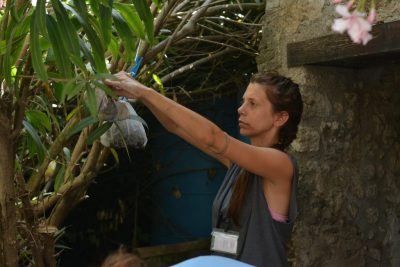 «Food is at once a universal necessity and subject to the particularities of environmental and socio-cultural settings. Examining trends in food consumption provides a means with which to detect shifts in past economies, and can greatly augment current understandings of the ways ancient populations interreacted with each other as well as their environments.
«Food is at once a universal necessity and subject to the particularities of environmental and socio-cultural settings. Examining trends in food consumption provides a means with which to detect shifts in past economies, and can greatly augment current understandings of the ways ancient populations interreacted with each other as well as their environments.
This project will explore the diverse ways that Roman imperial occupation impacted provincial lifeways, as reflected in foodways, or more specifically, food plants. As food plants were a traded commodity, tracking their trade and transport allows important new light to be shed on economic connectivity, trade networks, as well as culture scapes, and the intricate social dynamics that influence consumption patterns.
Such topics are not only of great relevance to the ancient world but also to modern studies of food and the impacts of the global economy
The focus will be on the Roman provinces of Britannia and Gaul, regions that are historically and geographically distinct, but also interconnected in terms of their proximity and necessary transport links. A large body of archaeobotanical data will be collated and entered into a relational database. Data analyses will look to methods from computational archaeology, employing underutilised techniques of advanced network analyses to model spatial and social distributions in food plants. In acquiring these new skills, the candidate will be able to combine such methods with existing expertise in large-scale, regional archaeobotanical studies.
Results will complement current knowledge on food plant trade by filling the essential gap that is the geographical centre of the European provinces, Gaul, as well as shedding new light on the trade in the frontiers. Implications will be far-reaching, offering novel insight into socio-economic networks, as well as human-landscape relationships, and the complex nature of cultural dynamics within imperial spheres.»
Project OverTheWaters: Reconstructing Roman inland waterways and sea movement with advanced computational techniques (HORIZON-MSCA-2023-PF-01-01-101154683)
Researcher: James Page
Supervisor: Hèctor A. Orengo (ICREA-ICAC)
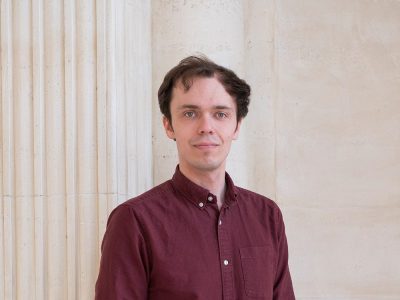 «The Roman conquest, occupation, and dominion over a large part of current Europe and beyond marked a strong change in social, cultural, and economic patterns in the area. Two of the most important and lasting changes were the establishment of a new transport network and the large-scale development of cities. Connectivity continues to be seen as an essential factor in the analysis of the spread of urbanisation, migration, the ancient economy, and the transmission of ideas.
«The Roman conquest, occupation, and dominion over a large part of current Europe and beyond marked a strong change in social, cultural, and economic patterns in the area. Two of the most important and lasting changes were the establishment of a new transport network and the large-scale development of cities. Connectivity continues to be seen as an essential factor in the analysis of the spread of urbanisation, migration, the ancient economy, and the transmission of ideas.
In Antiquity, connectivity could only be achieved via movement by land, river, and sea, and had to rely on the available transport network. While roads have been extensively investigated and have been reconstructed in detail in provinces such as Hispania, Galia, and Britannia, to date, no analysis of Roman movement and communication has incorporated navigable rivers, lakes, canals, and sea transport.
OverTheWaters project will reconstruct waterways and sea routes of the Western Roman Empire
Orbis, the only open geospatial tool for the analysis of Roman transport, only incorporates a few major rivers and a very simple network of sea routes, which pales in comparison with the number of sea and river quays, harbours, and ports archaeologically documented. Both epigraphy and classical reliefs and texts indicate Romans developed, maintained, and extended the network of inland waterways. Water transport was the preferred mode of transport for goods in bulk whenever possible as it was much cheaper than road transport and constituted the basis of international commerce.
OverTheWaters will reconstruct waterways and sea routes of the Western Roman Empire using big data and advanced computational methods to understand the importance of water movement, transport, and shipbuilding technology and how it influenced the development of urban centres acting as commercial hubs and consumption and redistribution foci.»
Project UnderTheForest: Mediterranean afforestation and the loss of mountain cultural landscapes: the case of Zagori (HORIZON-MSCA-2023-PF-01-01-101155232)
Researcher: Faidon Moudopoulos
Supervisor: Hèctor A. Orengo (ICREA-ICAC)
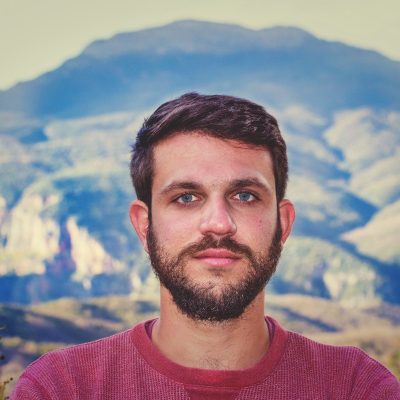 «Despite summer wildfires and the expansion of urban and agricultural areas, Mediterranean mountains have experienced extensive afforestation during the last 70 years. This has largely been a consequence of the abandonment of these areas and the loss of their traditional management strategies. Afforestation processes not only imply an important heritage loss as cultural landscapes disappear under the forest without having been studied but they also boost wildfires, as traditional ways of managing the forests were not replaced by proactive forest monitoring.
«Despite summer wildfires and the expansion of urban and agricultural areas, Mediterranean mountains have experienced extensive afforestation during the last 70 years. This has largely been a consequence of the abandonment of these areas and the loss of their traditional management strategies. Afforestation processes not only imply an important heritage loss as cultural landscapes disappear under the forest without having been studied but they also boost wildfires, as traditional ways of managing the forests were not replaced by proactive forest monitoring.
UnderTheForest will study the cultural landscape under threat of afforestation and already afforested in the area of Zagori (Greece)
Project results will lead to identifying and dating its human and natural elements and linking them to specific historical and socioeconomic processes. Despite being considered an area of exceptional natural heritage, Zagori’s cultural management has focused on its villages and their architectural elements, overlooking the landscape that sustained them.
UnderTheForest will provide important data for Zagori’s ongoing bid for the UNESCO World Heritage Site as a Cultural Landscape. To do so, the project will develop an innovative remote sensing workflow joining photogrammetric reconstruction for historical aerial imagery (1945 onwards), machine-learning probabilistic classification of multitemporal, multisource satellite imagery, and drone-based lidar survey (which will be able to locate structures under forest cover).
Together with more traditional archival research, pedestrian survey, trench excavation, and radiocarbon dating, the project will identify and contextualise the cultural assets that made this landscape unique and provide new tools that can be applied to other areas currently under afforestation processes.»

Funded by the European Union. Views and opinions expressed are however those of the author(s) only and do not necessarily reflect those of the European Union. Neither the European Union nor the granting authority can be held responsible for them.
Related News:
«MSCA results are out! 4 new postdoctoral fellowships for GIAP», GIAP website, February 16, 2024.
«España es el primer país de la UE por quinto año consecutivo en atraer talento en la convocatoria Marie Sklodowska Curie», Ministerio de Ciencia, Innovación y Universidades, February 19, 2024.
«España es el primer país de la UE por quinto año consecutivo en atraer talento en la convocatoria Marie Sklodowska Curie», Ministerio de Ciencia, Innovación y Universidades, February 16, 2024.
